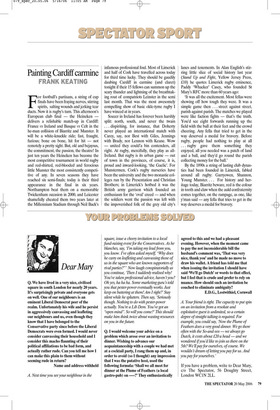Painting Cardiff carmine
FRANK KEATING
For football’s partisans, a string of cup finals have been fraying nerves, stirring spirits, salting wounds and jerking tear ducts. Now it is rugby’s turn. This afternoon’s European club final — the Heineken delivers a relishable match-up in Cardiff: France vs Ireland and Basque vs Celt in the he-man collision of Biarritz and Munster. It will be a white-knuckle ride; fast, fraught, furious; bone on bone, hit for hit — not remotely a pretty sight. But, olé and bejaysus, the commitment, the passion, the theatre! In just ten years the Heineken has become the most competitive tournament in world rugby and red-shirted, red-blooded and ferocious little Munster the most consistently competitive of any. In seven seasons they have reached six semi-finals; today is their third appearance in the final in six years. Northampton beat them on a memorable Twickenham occasion in 2000, and Leicester shamefully cheated them two years later at the Millennium Stadium through Neil Back’s infamous professional foul. Most of Limerick and half of Cork have travelled across today for third time lucky. They should be gaudily daubing Cardiff in carmine (and claret) tonight if their 15 fellows can summon up the scary thunder and lightning of the breathtaking rout of compatriots Leinster in the semi last month. That was the most awesomely compelling show of basic olde-tyme rugby I have winced at in years.
Soccer in Ireland has forever been harshly split: north, south, and never the twain ... dispiriting, for instance, that Doherty never played an international match with Carey, say, nor Best with Giles, Jennings with Brady, nor Lennon with Keane. Wow — united they could’a bin contenders, all right. At rugby, mercifully, they play as allIreland. But rugby is its urban game — out of town in the provinces, of course, it is, proud and inward-looking, ‘the Gaelic’. For Munstermen, Cork’s rugby nurseries have been the university and the two monastic colleges run by the Presentation and Christian Brothers; in Limerick’s hotbed it was the British army garrison which founded an enthusiasm for the ‘oval’ creed — and when the soldiers went the passion was left with the impoverished folk of the grey old city’s lanes and tenements. In Alan English’s stirring little slice of social history last year (Stand Up and Fight, Yellow Jersey Press, £10) he quotes Limerick rugby eminence, Paddy ‘Whacker’ Casey, who founded St Mary’s RFC more than 60 years ago: ‘It was all the excitement. Most fellas were showing off how tough they were. It was a simple game then ... street against street, parish against parish. The matches we played were like faction fights — that’s the truth. You’d see eight forwards running up the field with the ball at their feet and the crowd cheering. Any fella that tried to get in the way deserved a medal for bravery. Before rugby, people had nothing to play at all ... rugby gave them something they enjoyed, all you needed was a patch of land and a ball, and they’d go round the parish collecting money for the ball.’ By the 1890s a string of lasting club dynasties had been founded in Limerick, fabled around all rugby: Garryowen, Shannon, Young Munster.... For history and heritage today, Biarritz beware, red is the colour in tooth and claw when the auld confraternity comes together, on the rampage, as one, like y’man said — any fella that tries to get in the way deserves a medal for bravery.


















































































 Previous page
Previous page